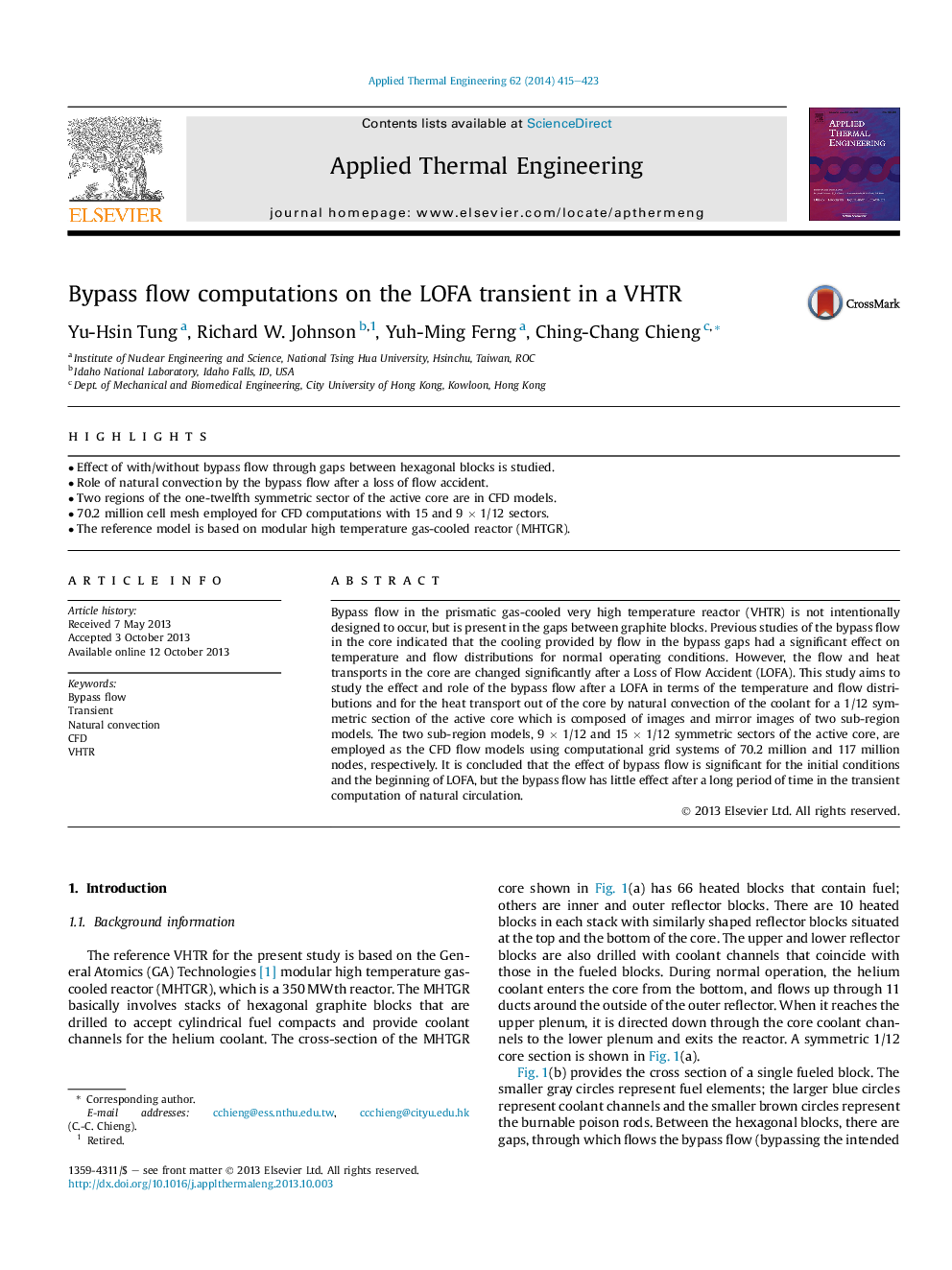| Article ID | Journal | Published Year | Pages | File Type |
|---|---|---|---|---|
| 646354 | Applied Thermal Engineering | 2014 | 9 Pages |
•Effect of with/without bypass flow through gaps between hexagonal blocks is studied.•Role of natural convection by the bypass flow after a loss of flow accident.•Two regions of the one-twelfth symmetric sector of the active core are in CFD models.•70.2 million cell mesh employed for CFD computations with 15 and 9 × 1/12 sectors.•The reference model is based on modular high temperature gas-cooled reactor (MHTGR).
Bypass flow in the prismatic gas-cooled very high temperature reactor (VHTR) is not intentionally designed to occur, but is present in the gaps between graphite blocks. Previous studies of the bypass flow in the core indicated that the cooling provided by flow in the bypass gaps had a significant effect on temperature and flow distributions for normal operating conditions. However, the flow and heat transports in the core are changed significantly after a Loss of Flow Accident (LOFA). This study aims to study the effect and role of the bypass flow after a LOFA in terms of the temperature and flow distributions and for the heat transport out of the core by natural convection of the coolant for a 1/12 symmetric section of the active core which is composed of images and mirror images of two sub-region models. The two sub-region models, 9 × 1/12 and 15 × 1/12 symmetric sectors of the active core, are employed as the CFD flow models using computational grid systems of 70.2 million and 117 million nodes, respectively. It is concluded that the effect of bypass flow is significant for the initial conditions and the beginning of LOFA, but the bypass flow has little effect after a long period of time in the transient computation of natural circulation.
